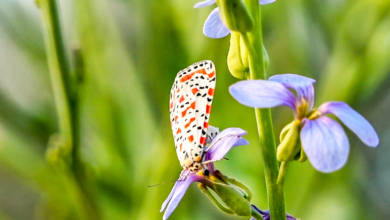Key information
They are very territorial so you’re unlikely to see more than one at once. Shrikes are often ‘mobbed’ by other birds which recognise them as dangerous predators. Keep an eye out for a medium-sized, long-tailed bird sitting at the top of a tree. The black mask and grey plumage are distinctive.
That the first part of its Latin name, Lanius, means butcher could not be more apt, because, after chasing down a small bird or dropping on a vole or lizard, the shrike beats its victim to death with its inch-long beak.
Often spotted on a vantage point, the bird is the lone hunter, the watcher, the sentinel (excubitor); always alert, not only for its prey, but also for birds of prey, upon sight of which it emits an alarm call similar to the shriek of a jay. Indeed, shrike is thought to be a derivative of shriek, hence the bird’s name.
Where to see the Great Gray Shrike in Fujairah ?
You can spot the bird at the Fujairah Adventure Park.
What they eat:
Beetles and other insects, small mammals and birds. Food is often stored in a ‘larder’ by impaling it on a thorn!
Over the years, there’s been confusion as to which family this bird belongs to and whether it’s a corvid or a bird of prey. In fact, it’s a songbird, albeit with a powerful hooked bill and violent, carnivorous tendencies.
Appearance:
Light grey upperparts, black wings and tail with white patches, white underparts and throat. Broad, black eyestripe not reaching above highest point of bill. Bill long and medium heavy (not as heavy as in Lesser GS). White patch at base of primaries varies according to subspecies. Black part of tail most narrow at base. Juveniles less pure in colour, with faintly barred underparts and buff fringes to greater coverts.
Sound:
Alarm call very harsh, nasal and noisy. Dry and not as deep or resonant as crows. Song varied. During breeding season a varied subdued song is heard from both sexes. Territorial call before breeding starts is simple, loud and resonant. Consisting of pleasant sounding single or double syllables, with well defined pauses and peculiar harmonics.
Territorial call/song:
Several different sounds of the species:



